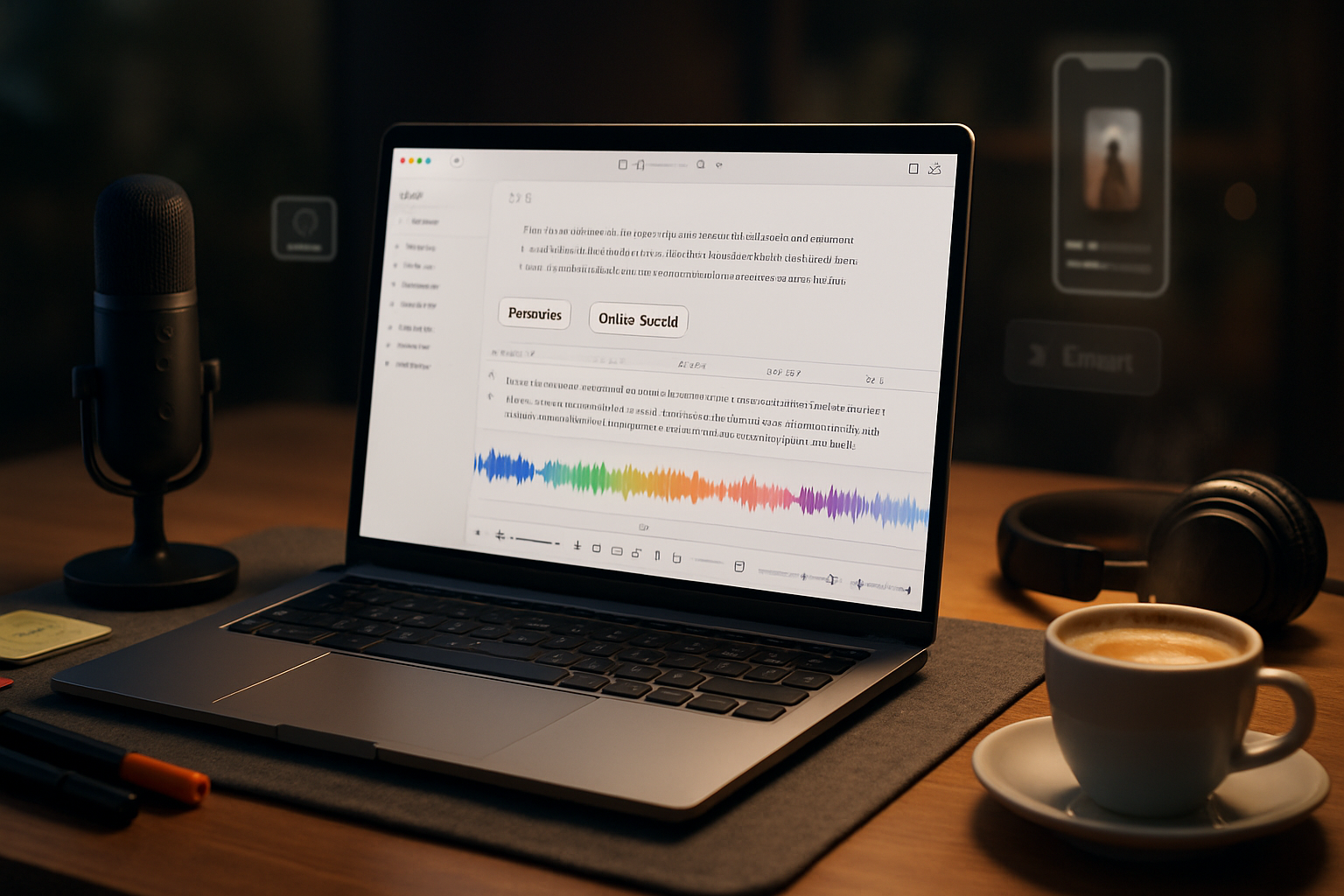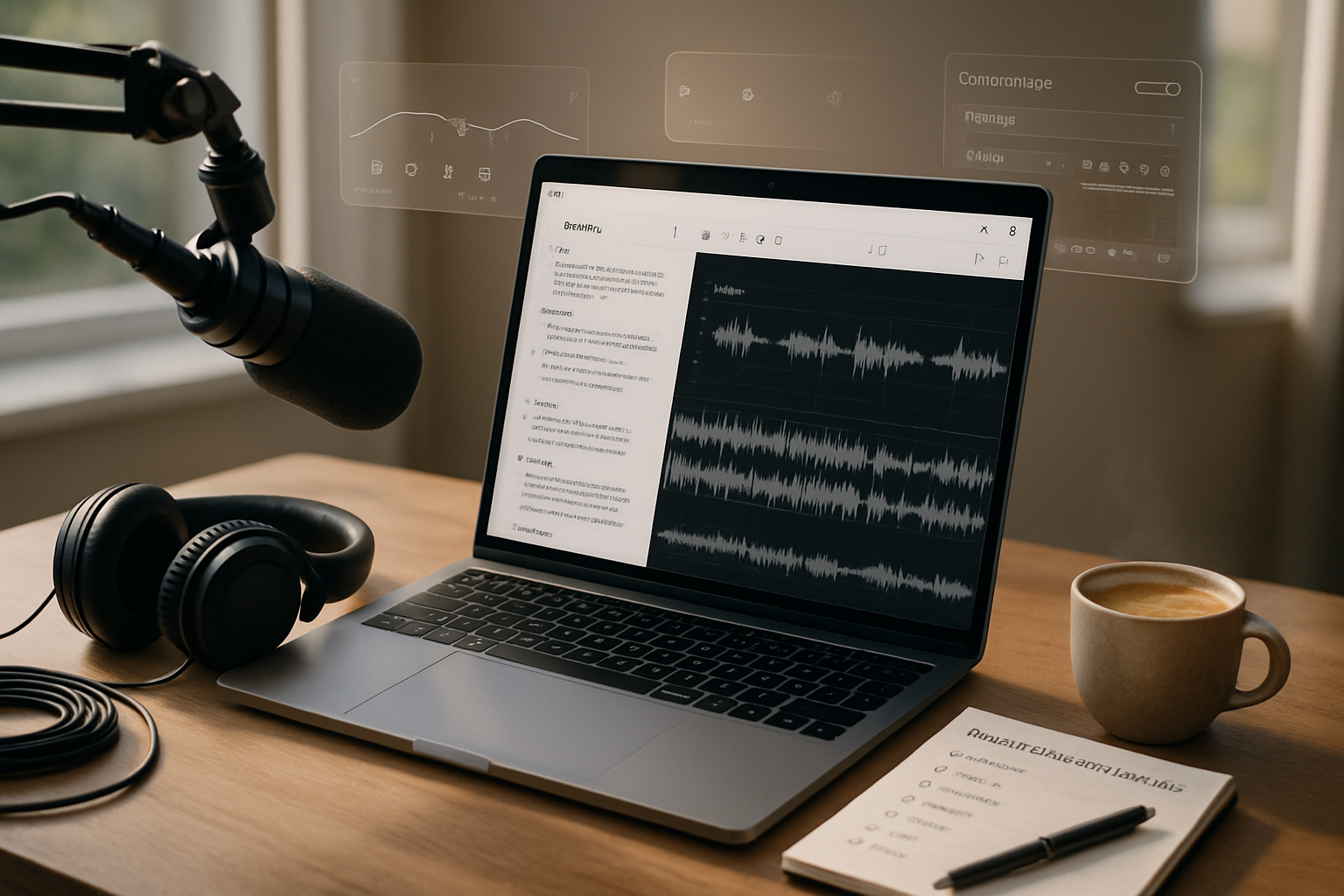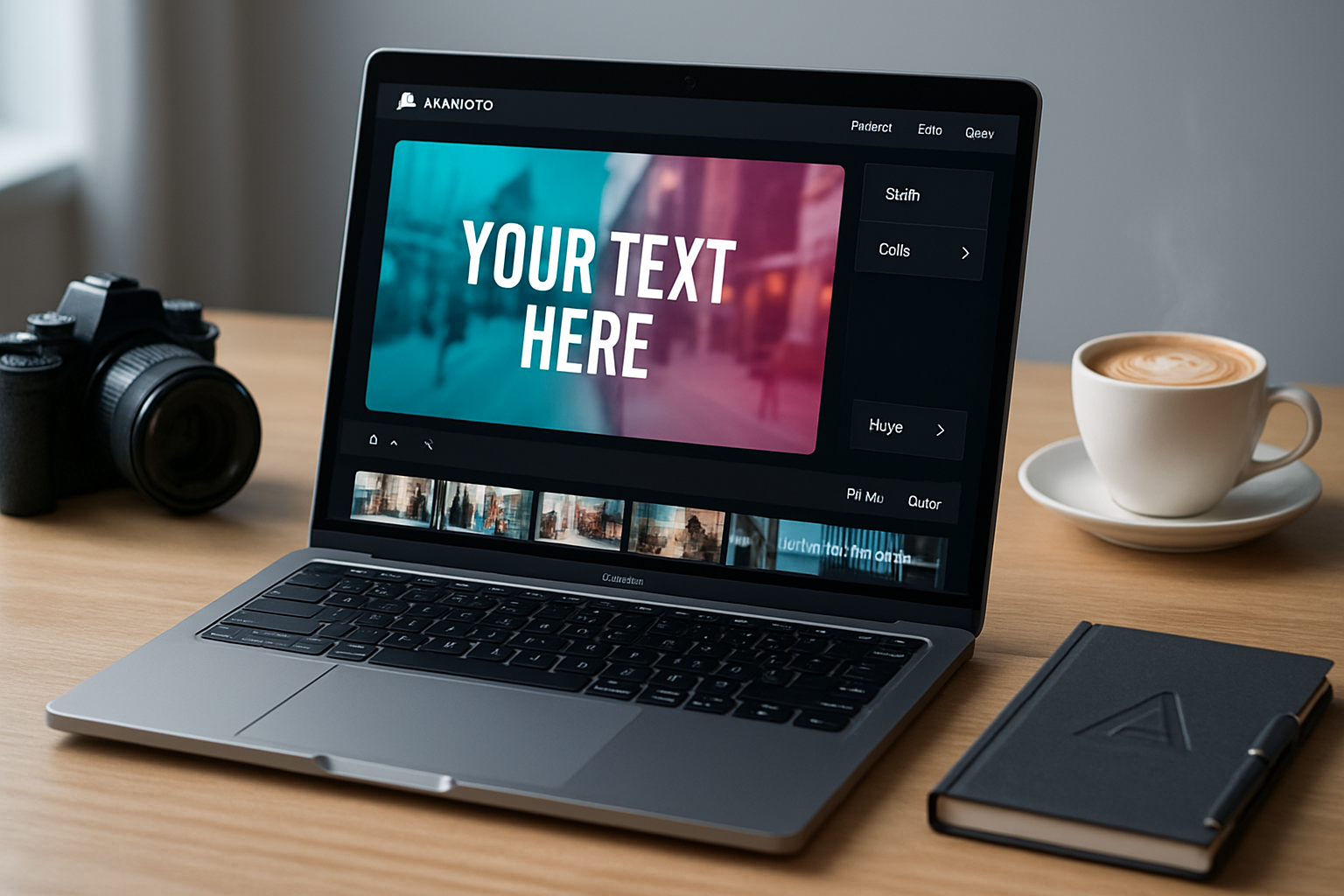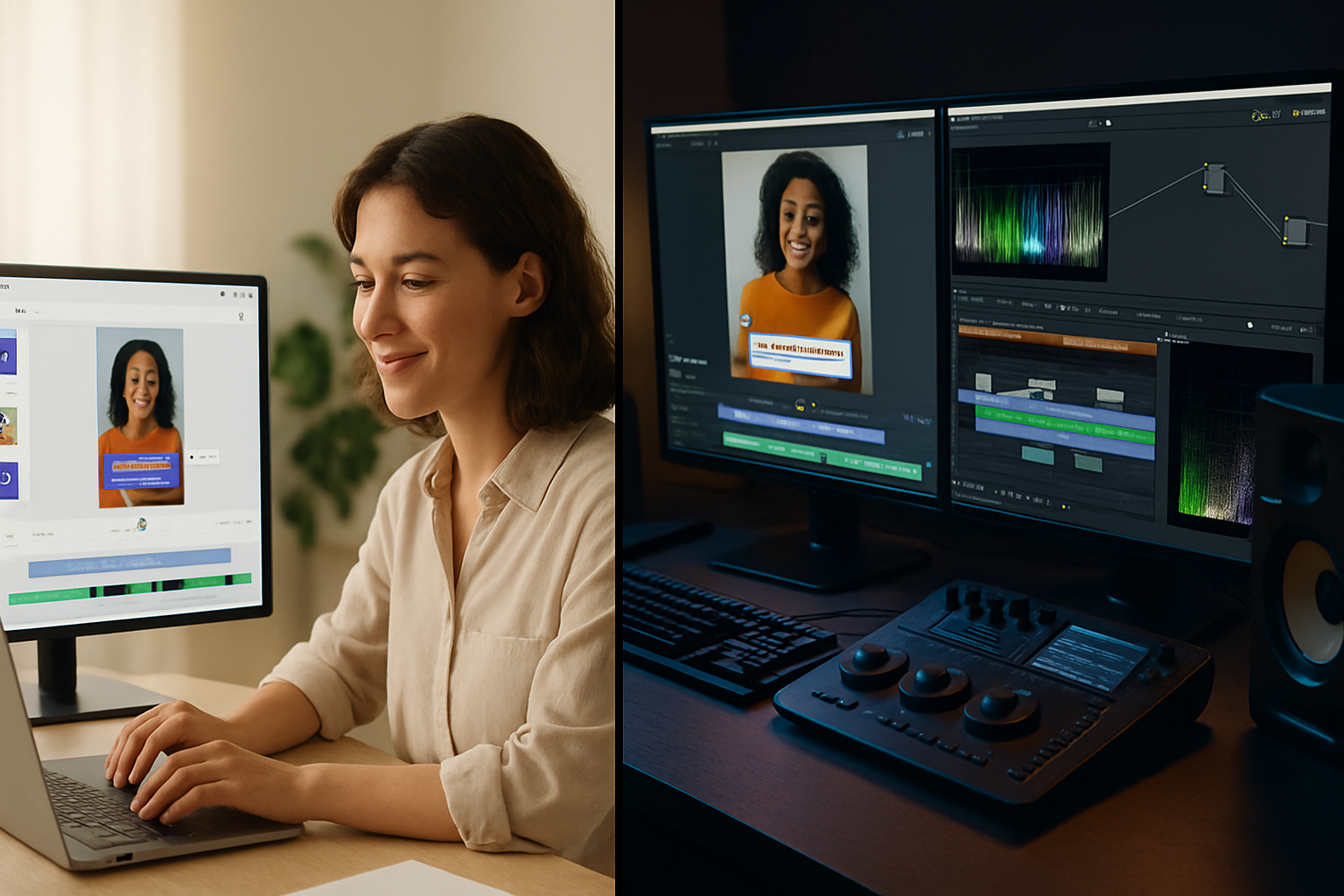· creativity · 6 min read
The Hidden Features of Descript: Tips You Didn't Know Existed
Discover lesser-known Descript features - from Overdub tricks and Studio Sound hacks to composition workflows, batch exports, and review links - that will speed up editing and help you publish polished audio/video faster.

Outcome: shave hours off editing, fix mistakes without re-recording, and turn one recording into many pieces of content - all inside Descript.
If you use Descript to produce podcasts, videos, or social clips, this article will show the hidden tools and workflows you probably aren’t using yet - but should be. Read fast. Implement faster.
Quick wins you can apply in 10 minutes
1) Remove filler words automatically (and choose what happens next)
You already know you can edit via the transcript. But did you know Descript can detect and remove filler words automatically? Enable Filler Word Detection, click the Filler Words button, then choose one of three options: highlight, remove, or replace with a beep. Use “highlight” first so you can review before mass-deleting. Quick win: run detection, scan highlights for any intentional “ums,” and remove the rest in one pass.
Why it matters: it takes you from a messy raw transcript to a clean read without combing through audio waveforms.
2) Shorten (not remove) long pauses
Long pauses drag pace and bore listeners. Use Shorten Silence to collapse long gaps while keeping natural rhythm. You set the maximum silence length and the target - for example, shrink silences longer than 800ms to 300ms. This retains breathing while tightening flow.
When to use: interview edits, tutorial recordings, and any content where pacing matters.
3) One-click audio cleanup: Studio Sound
Studio Sound is Descript’s AI audio repair. Turn it on and it reduces background noise, evens tone, and adds presence so rough laptop mic recordings sound fuller and cleaner. It’s not magic, but it’s close - especially for remote interviews.
Pro tip: apply Studio Sound before you apply EQ or compression so the AI has the rawest signal to work with.
Power moves - features that change workflows
4) Overdub: fix words without re-recording
Overdub lets you type a missing word or sentence and generate audio in the voice you created. Use it to:
- Patch a flubbed sentence without a re-record. Type, generate, drop in. Done.
- Create multiple language variants of short text (if you have multilingual Overdub voice models).
Checklist before using Overdub: train the voice per Descript’s policy, confirm a natural cadence, and always listen for odd inflection. It’s powerful - use it ethically and label Overdubed segments if you share drafts.
Learn more: https://www.descript.com/overdub
5) Composition: organize, repurpose, and re-export fast
Compositions are modular assemblies of clips that live above your timeline. Think of them as playlists or “final masters” of sequences you want to export. Create a composition for:
- Full episode master
- Trailer or teaser clips
- Social-sized edits
You can have the same clip appear in multiple compositions without duplicating the source. That means you can maintain one clean interview and repurpose clips into several finished outputs.
Why it’s hidden but huge: it turns a linear editor into a repurposing machine.
6) Find & Replace in transcripts (yes, really)
You can search the entire transcript and replace words - audio and text - with Overdub. Use this when a brand name is spelled different ways, or you want to standardize phrasing across a long recording. It’s faster than scrubbing and re-recording every instance.
7) Speaker detection and diarization - then label for speed
Turn on speaker detection to auto-diarize your interview. Then rename speakers in the transcript (Host, Guest 1, Guest 2). Once labeled, you can search just the host’s lines, or mute a single speaker to isolate problems. This is a big help for multi-person recordings.
8) Batch export and templates for repeatable workflows
If you publish episodes regularly, create a composition template (intro, ad slot, episode content, outro) and export presets for your podcast host, YouTube, and social platforms. Then use batch export to produce all versions in one click.
Result: what used to take hours becomes a predictable, repeatable export pipeline.
Collaboration and review features you may be overlooking
9) Share a review link with time-stamped comments
Instead of bouncing files back and forth, publish a view-only link and invite reviewers to leave timestamped comments. They can comment directly on the transcript or the timeline. You’ll get actionable notes, not vague email replies.
10) Version history and snapshots
Descript stores history of your composition edits. Use snapshots before major destructive operations (mass delete filler words, large Overdub inserts). If you don’t like the result, roll back.
11) Markers, chaptering, and clips for faster navigation
Drop markers as you record or while editing to tag important moments. Use markers to automatically create chapters or to pull clips for social repurposing. This reduces time hunting through long timelines.
Advanced audio & effects tips
12) Stack effects, then render
Add Studio Sound first, then EQ, compressor, and limiter as separate Effects. Tweak flags and listen in context. Don’t over-compress; use subtlety. Render the composition before final export so all effects are baked in across platforms.
13) Auto-ducking for music under speech
Lower music levels automatically under spoken words so your music doesn’t overpower dialogue. This is ideal for podcast intros, transitions, and social clips. If Descript’s auto-ducking feels blunt, add manual fades at transition points.
Repurpose and distribution hacks
14) Create social clips with “snippets” and compositions
Highlight the core 15–60 second moment, drag it into a composition, format for aspect ratios, add captions (auto-generate subtitles), and export. Save caption styles as templates so every social clip is publish-ready.
15) Generate audiograms and captions in one pass
Descript can export video with burned-in captions or separate SRT files. While designing social content, export both so you have captioned video and a caption file for platforms that need it.
Workflow examples (copy-and-adapt)
Example: 30-minute interview -> 3 social promos + 1 episode master
- Transcribe the interview and run speaker detection.
- Apply Studio Sound to all tracks.
- Run Filler Word Detection and Shorten Silence (highlight-only first).
- Create composition - Episode Master. Clean up, Overdub small flubs.
- Save snapshots. Create composition - Promo 1 (drag the best 45s), Promo 2, Promo 3.
- Apply captions and export all via batch export.
Outcome: one recording becomes four publishable assets in less than the time it would take to re-cut in a different editor.
Hidden-but-practical keyboard and UI habits
- Learn a few shortcuts for play/pause and fast-skip - they save minutes every session. (Check Descript’s keyboard shortcuts panel for your OS.)
- Use the transcript search bar to jump instantly to mentions of topics or brand names.
- Audition Overdub inserts at low volume first so you can judge cadence against the original voice.
Gotchas and ethical notes
- Overdub is powerful; always disclose synthetic audio where required and follow legal/ethical guidelines for voice cloning.
- Studio Sound can alter timbre; if fidelity to the original speaker is critical (e.g., documentary), compare before/after and keep backups.
- Auto-detection features (fillers, speakers) are not perfect. Always review suggested edits before committing.
Final tip - the combo that makes editing almost effortless
Individually, Overdub, Studio Sound, and Compositions are huge time-savers. Together they let you repair mistakes, clean audio, and produce multiple deliverables from one session - with minimal re-recording and almost no rework.
Use Studio Sound to make the raw audio presentable. Use Overdub to patch mistakes without scheduling another session. Use Compositions to organize and publish every format you need. Do this, and you’ll go from “one messy recording” to “publish-ready suite” in a single workflow.
That combination changes how quickly you can create.
References
- Descript main site: https://www.descript.com
- Overdub: https://www.descript.com/overdub
- Descript Help Center: https://help.descript.com



